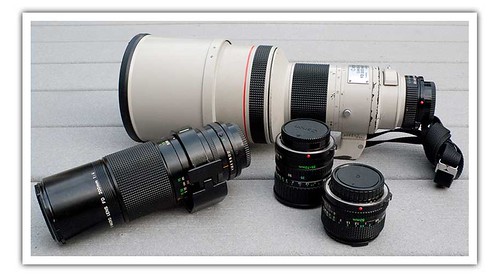Audii-Dudii
Active member
Has anyone else addressed this and if so, what was your source for them? Is it possible to adapt the tripod collars from other Olympus lenses to work on these two?
In case you're curious as to why I need them, it's because I'm starting to use these lenses on my GF1 and E-P1 bodies and unlike with my G1 and L1, I'm concerned the bodies aren't strong enough to support them, especially when I sling the tripod over my shoulder and walk around with the camera/lens still attached.
Worst case, I can always fab something that will do the job, but right now, money is more plentiful for me than time, so I'd prefer to buy something off the shelf than to roll them myself.
In case you're curious as to why I need them, it's because I'm starting to use these lenses on my GF1 and E-P1 bodies and unlike with my G1 and L1, I'm concerned the bodies aren't strong enough to support them, especially when I sling the tripod over my shoulder and walk around with the camera/lens still attached.
Worst case, I can always fab something that will do the job, but right now, money is more plentiful for me than time, so I'd prefer to buy something off the shelf than to roll them myself.


